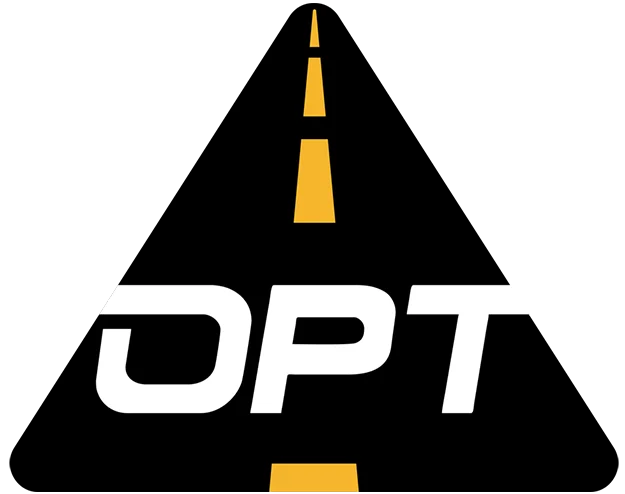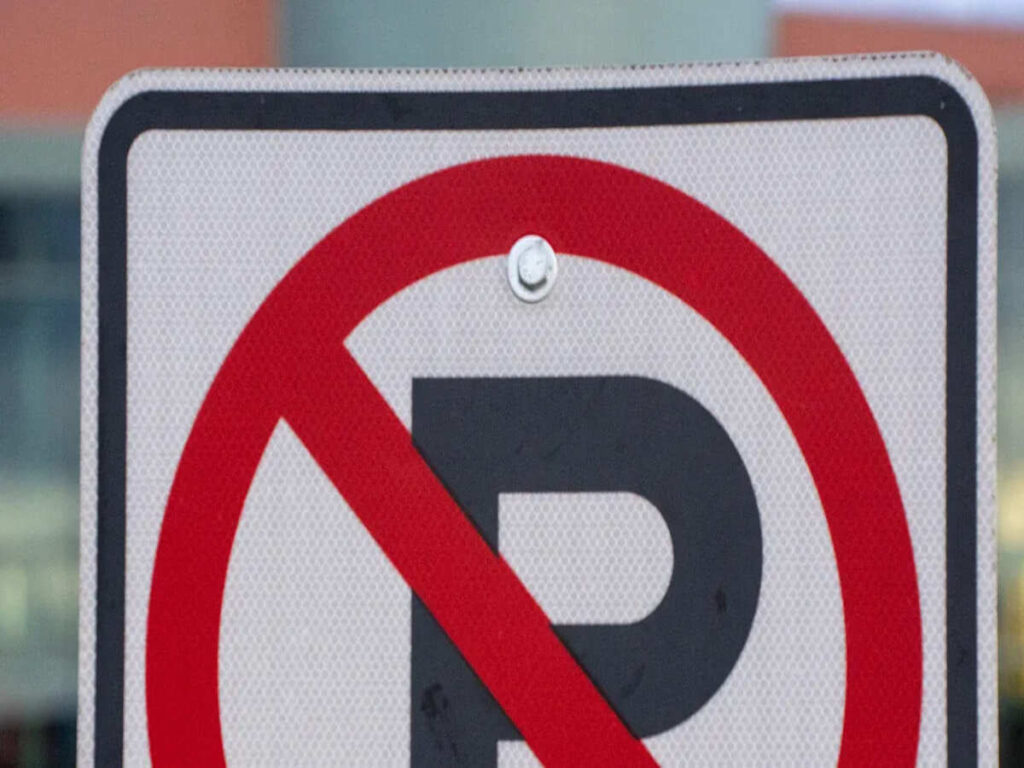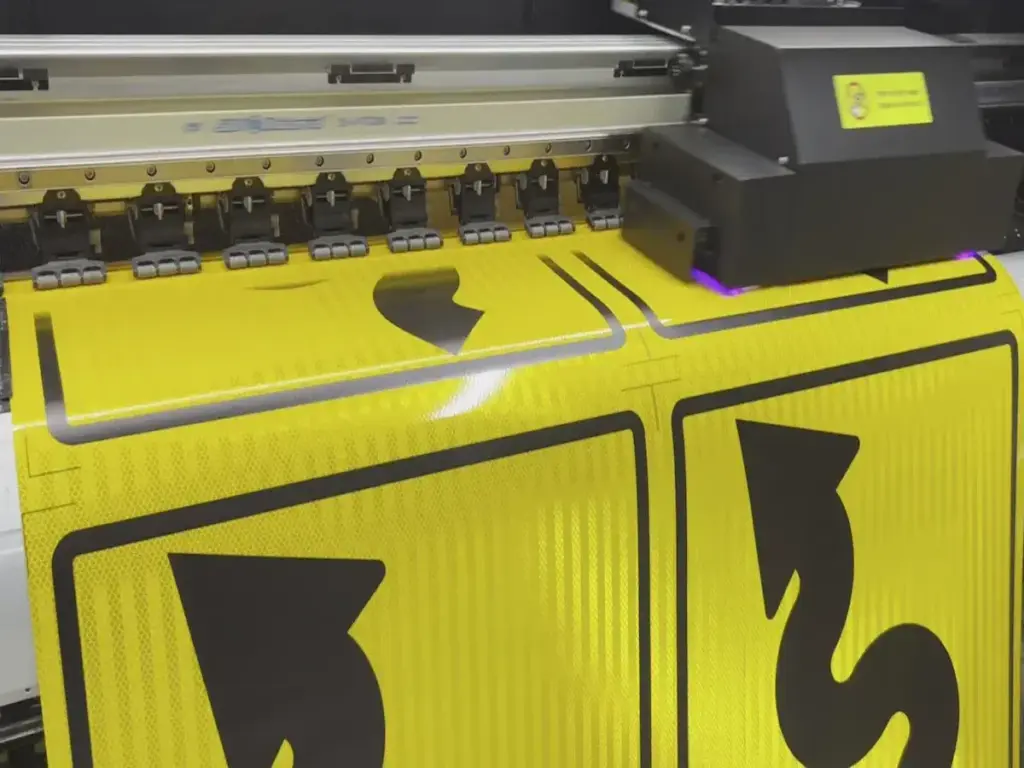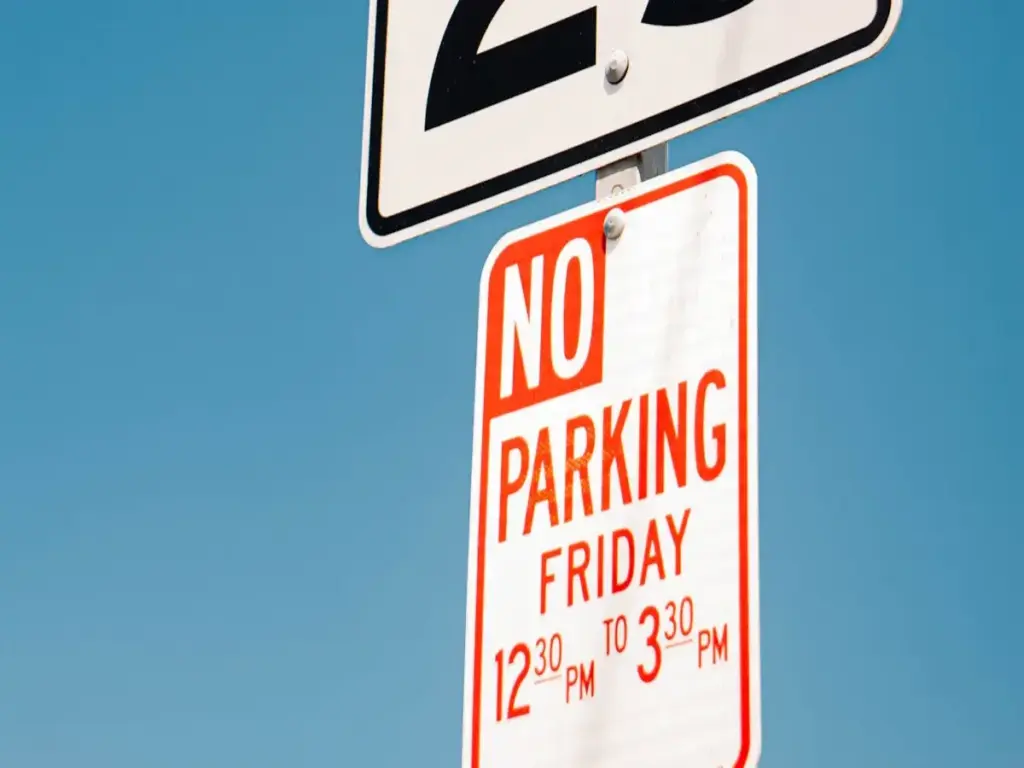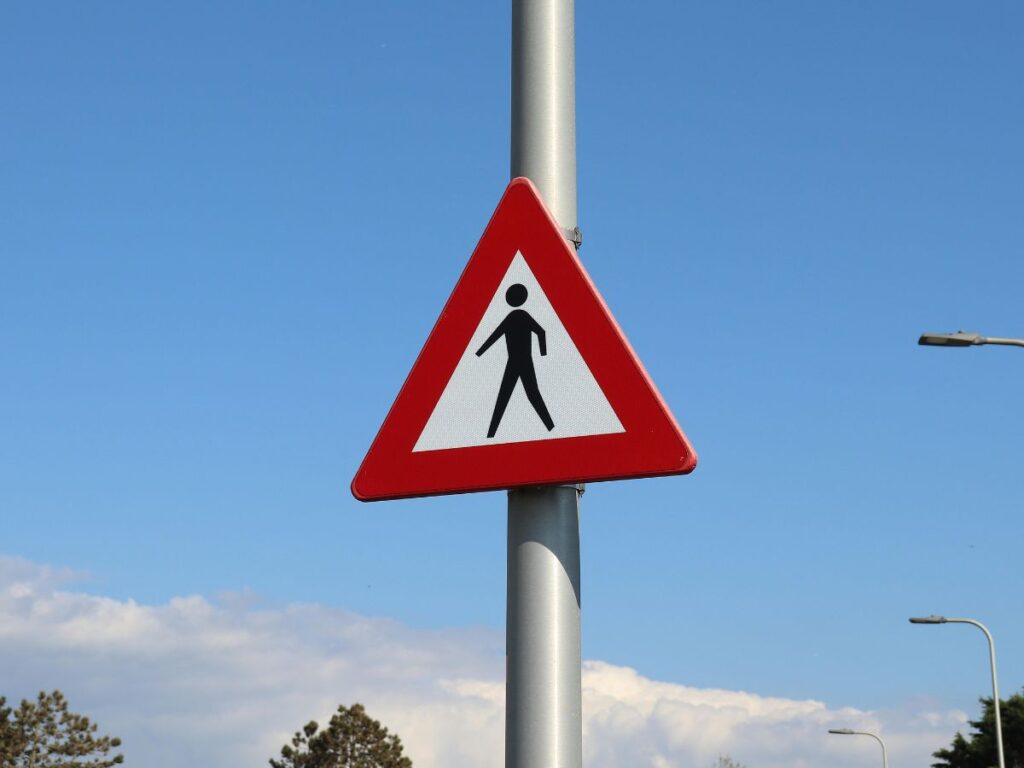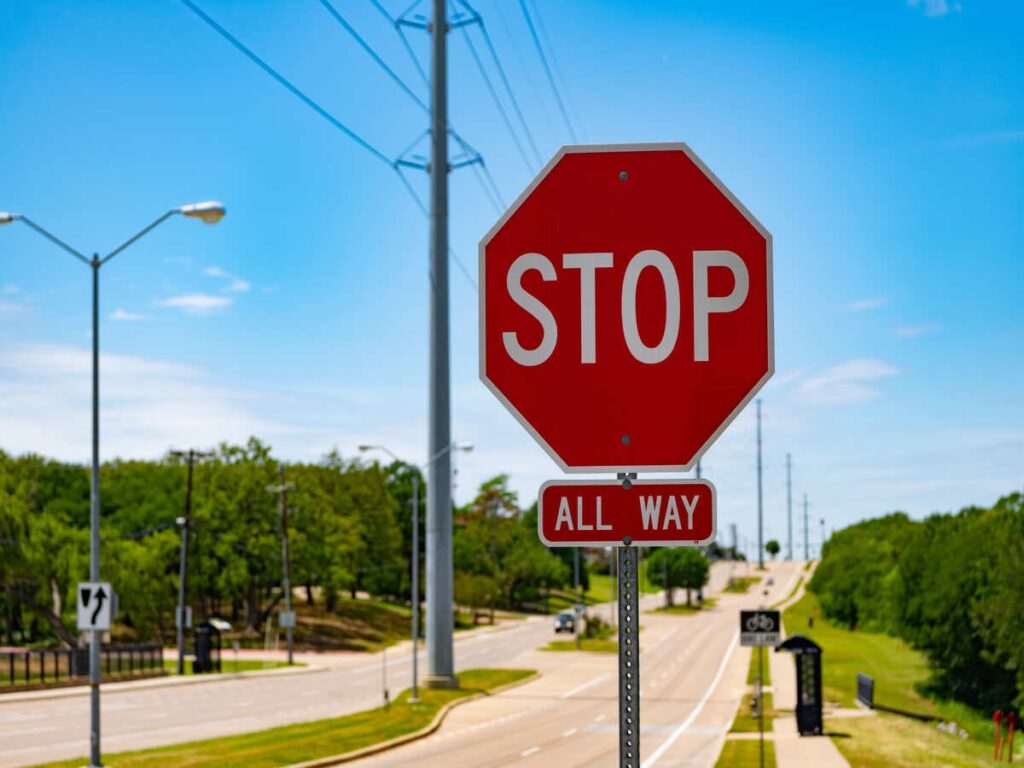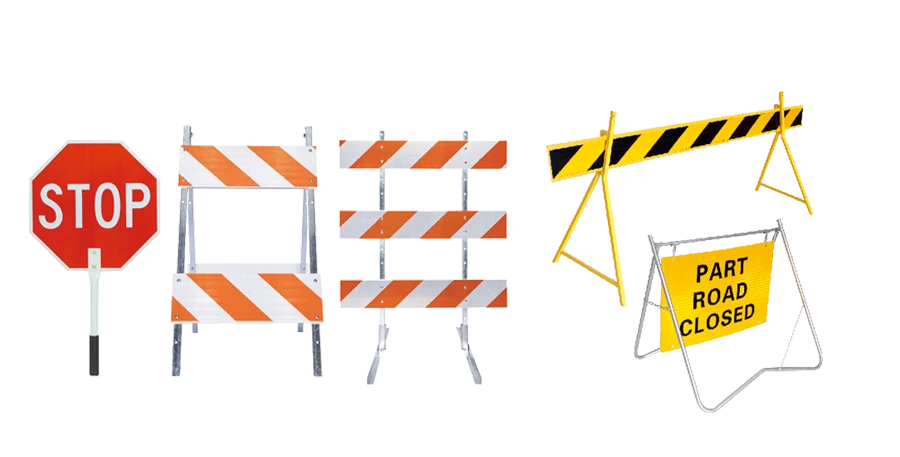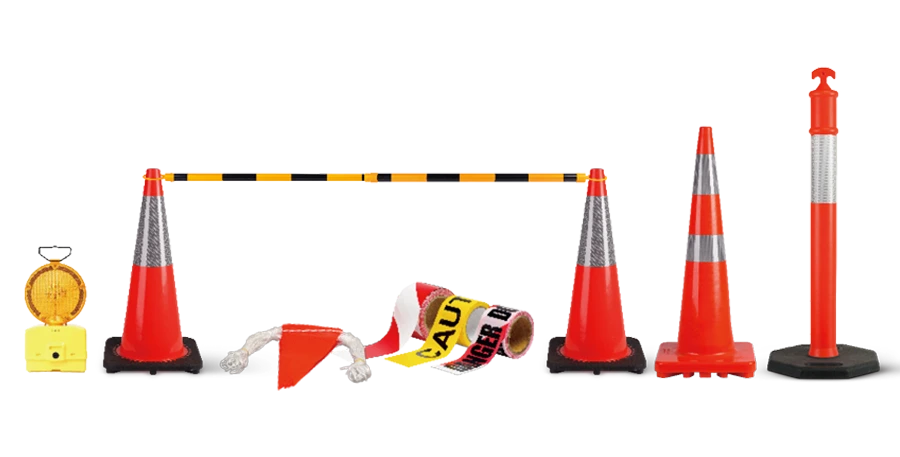
Um Verkehrsprobleme zu lösen, braucht es nicht immer eine teure Infrastruktur. Leitkegel bieten kostengünstige Lösungen, mit denen Sie Staus effektiv bewältigen können. Diese einfachen Tools verbessern den Verkehrsfluss, indem sie Fahrzeuge leiten und für Ordnung auf stark befahrenen Straßen sorgen. Sie erhöhen auch die Sicherheit, indem sie Gefahrenbereiche markieren oder Fahrer in Notfällen umleiten. Wenn Sie eine sofortige Lösung benötigen, Sie können Leitkegel kaufen und diese schnell einsetzen. Ihre Vielseitigkeit macht sie zu einem unverzichtbaren Werkzeug, um Engpässe ohne große Investitionen zu beheben.
Verkehrsengpässe verstehen
Was sind Verkehrsengpässe??
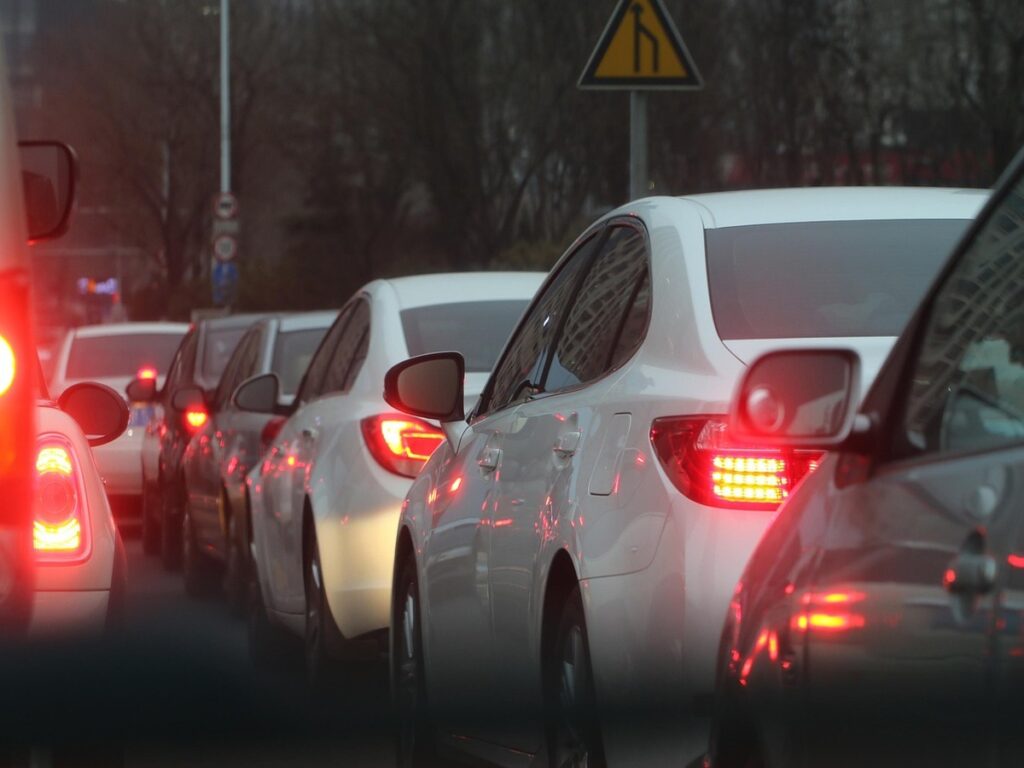
Ein Verkehrsengpass entsteht, wenn der Fahrzeugstrom an einer bestimmten Stelle der Straße langsamer wird oder anhält. Aufgrund physischer oder betrieblicher Probleme kommt es häufig wiederholt zu Störungen am selben Ort. Häufige Ursachen sind Mängel bei der Straßengestaltung, abrupte Spurwechsel, oder schlecht getaktete Ampeln. Zum Beispiel, Eine scharfe Kurve oder ein plötzlicher Spurabfall können zu einer Staustelle führen, Fahrzeuge zum Abbremsen zwingen. Diese Engpässe verringern die Effizienz der Straßen und erschweren es Ihnen, Ihr Ziel pünktlich zu erreichen.
Die Auswirkungen von Engpässen auf die Überlastung
Engpässe sind ein wesentlicher Verursacher von Verkehrsstaus. Tatsächlich, sie machen etwa aus 40 Prozent aller Verkehrsstaus in den Vereinigten Staaten. Das bedeutet, dass fast die Hälfte aller Verzögerungen auf der Straße durch diese wiederkehrenden Störungen verursacht werden. Die Auswirkungen gehen über die bloße Zeitverschwendung hinaus. Engpässe führen zu einem höheren Kraftstoffverbrauch und erhöhten Fahrzeugemissionen, die der Umwelt schaden. Sie sorgen auch für Frustration beim Autofahrer und können sogar das Unfallrisiko erhöhen. Die Beseitigung dieser Engpässe ist für die Verbesserung des Verkehrsflusses und die Verringerung der Staus in städtischen Gebieten von entscheidender Bedeutung.
Häufige Ursachen für Verkehrsengpässe
Mehrere Faktoren können zu Verkehrsengpässen führen. Zu den häufigsten gehören::
- Baustellen, in denen Fahrspuren vorübergehend gesperrt sind
- Unfallstellen, die den Verkehr blockieren
- Schmale Straßen mit begrenzter Kapazität
- Geländeherausforderungen wie steile Hügel oder scharfe Kurven
- Schlecht getaktete Ampeln
- Langsam fahrende Fahrzeuge stören den Verkehrsfluss (auch genannt “bewegliche Engpässe”)
- Rubbernecking, wo Fahrer langsamer werden, um sich Vorfälle anzusehen
Das Verständnis dieser Ursachen kann Ihnen helfen, Problembereiche zu identifizieren und Lösungen zur Verbesserung der Verkehrsbedingungen umzusetzen.
Warum kostengünstige Lösungen wie Leitkegel unerlässlich sind

Budgetbeschränkungen im Verkehrsmanagement
Die effektive Verwaltung des Datenverkehrs erfordert häufig erhebliche Ressourcen. Jedoch, Viele Kommunen haben mit knappen Budgets zu kämpfen, Dies macht es schwierig, in große Infrastrukturprojekte zu investieren. Sie benötigen erschwingliche Tools, die Staus beseitigen können, ohne die finanziellen Ressourcen zu belasten. Eine praktische Lösung bieten Leitkegel. Sie sind preiswert, wiederverwendbar, und einfach zu implementieren. Im Gegensatz zu fortschrittlichen Verkehrskontrollsystemen, Kegel erfordern keine umfangreiche Installation oder Wartung. Dies macht sie zur idealen Wahl für Städte und Gemeinden, die den Verkehrsfluss verbessern und gleichzeitig das Budget einhalten möchten.
OPTsigns Verkehrskegel sind für diese Lösung die perfekte Lösung. Entwickelt für Haltbarkeit und Sichtbarkeit, Sie helfen Ihnen, den Verkehr effizient zu verwalten, ohne dass komplexe Systeme erforderlich sind. Ganz gleich, ob Sie den Verkehr bei Straßenreparaturen leiten oder den Verkehrsfluss in Gebieten mit hohem Verkehrsaufkommen organisieren müssen, OPTsigns Verkehrskegel bieten eine kostengünstige, einfach, und zuverlässige Möglichkeit, die Sicherheit zu erhöhen und einen reibungslosen Betrieb zu gewährleisten. Wenn Sie Verkehrskegel kaufen möchten, OPTsigns bietet eine große Auswahl, um Ihren Anforderungen gerecht zu werden, Wir stellen sicher, dass Sie die beste Qualität zu einem erschwinglichen Preis erhalten.
Vergleich von Leitkegeln mit teuren Infrastrukturprojekten
Der Bau neuer Straßen oder die Installation fortschrittlicher Verkehrsmanagementlösungen kann Jahre dauern und Millionen von Dollar kosten. Diese Projekte sind oft mit einer langwierigen Planung verbunden, Konstruktion, und Überwachungsphasen. Im Gegensatz, Leitkegel liefern sofortige Ergebnisse. Sie können sie verwenden, um den Verkehr umzuleiten, Gefahrenbereiche absperren, oder temporäre Gassen erstellen. Zum Beispiel, Leitkegel können Fahrzeuge durch Baustellen oder um Unfallstellen herumleiten, Gewährleistung eines reibungslosen Verkehrsflusss. Sie tragen auch dazu bei, wiederkehrende Überlastungen zu reduzieren, indem sie schnelle Lösungen für Engpassverbesserungen anbieten. Während große Projekte ihre Berechtigung haben, Kegel liefern schnelle und effektive Ergebnisse zu einem Bruchteil der Kosten.
Die Rolle von Leitkegeln bei der Staureduzierung
Leitkegel spielen eine entscheidende Rolle bei der Bewältigung von Staus und der Gewährleistung der Verkehrssicherheit. Sie leiten Fahrzeuge und markieren im Notfall Gefahrenzonen, sorgt für hohe Sichtbarkeit und Stabilität. Sie können damit physische Barrieren schaffen, die gesperrte Fahrspuren blockieren und Fahrzeuge auf offene Fahrspuren leiten. Dies trägt dazu bei, einen gleichmäßigen Verkehrsfluss aufrechtzuerhalten und lange Warteschlangen zu vermeiden. Bei Naturkatastrophen, Verkehrsleitkegel verbessern die Sichtbarkeit von Straßensperrungen und Ausweichrouten, Unterstützung bei sicheren Evakuierungen. Sie arbeiten auch zusammen mit Pfeiltafeln, um Fahrzeuge von Unfallstellen wegzuleiten, Reduzierung des Risikos sekundärer Unfälle. Durch strategische Verwendung von Verkehrskegeln, Sie können den Verkehrsfluss optimieren und die allgemeine Sicherheit verbessern.
So nutzen Sie Leitkegel für ein effektives Verkehrsmanagement
Spurumleitung
Temporäre Fahrspuren schaffen
Leitkegel eignen sich hervorragend zur Schaffung temporärer Fahrspuren zur Verbesserung des Verkehrsflusses. Sie können damit Fahrzeuge durch Bereiche mit hohem Verkehrsaufkommen oder um Hindernisse herum leiten. Für eine effektive Spurumleitung, Achten Sie beim Platzieren von Leitkegeln immer auf den Gegenverkehr, um die Sichtbarkeit zu gewährleisten. Halten Sie einen Abstand von mindestens ein 30 Füße zwischen den Kegeln, um eine klare Führung zu gewährleisten. In Bauzonen, Schwerere Verkehrsleitkegel mit reflektierendem Band verbessern die Sichtbarkeit und Stabilität, Besonders nachts. Platzieren Sie zumindest Zapfen 200 Stellen Sie die Füße vor dem Arbeitsbereich auf, um den Fahrern ausreichend Warnung zu geben. Sobald die temporäre Spur nicht mehr benötigt wird, Entfernen Sie die Zapfen umgehend, um Verwechslungen zu vermeiden.
Zusammenführungspunkte verwalten
Punkte zusammenführen Oftmals kommt es zu Staus und langen Staus. Leitkegel helfen Ihnen bei der Bewältigung dieser Bereiche, indem sie Fahrzeuge auf bestimmte Fahrspuren leiten. Verwenden Sie Kegel, um eine allmähliche Verjüngung zu erzeugen, die den Fahrer sanft in die Einmündungsspur leitet. Dadurch werden abrupte Spurwechsel reduziert und der Verkehrsfluss verbessert. Zusätzliche Verkehrsleitkegel können Gefahren oder Hindernisse in der Nähe des Einmündungspunkts markieren, Gewährleistung der Sicherheit aller Verkehrsteilnehmer. Die richtige Platzierung der Leitkegel minimiert Engpässe und sorgt für einen effizienten Verkehrsfluss.
Vorübergehende Schließungen
Absperrung von Gefahrenbereichen
Leitkegel eignen sich ideal zur Markierung von Gefahrenstellen auf der Straße. Ihre leuchtenden Farben, wie Orange oder Limettengrün, machen sie auch bei schlechten Lichtverhältnissen gut sichtbar. Mit Verkehrsleitkegeln können Sie Unfallstellen absperren, Schlaglöcher, oder andere Gefahren. Ihr leichtes und tragbares Design ermöglicht einen schnellen Aufbau. Dadurch wird sichergestellt, dass Fahrer klare Warnungen erhalten und sich sicher um die Gefahr herum bewegen können.
Umleitung des Verkehrs während der Bauarbeiten
Während des Bauwesens, Leitkegel spielen eine entscheidende Rolle bei der Umleitung von Fahrzeugen. Sie können damit Fahrspuren sperren und Ausweichrouten erstellen. Reflektierende Kegel verbessern die Sichtbarkeit, hilft den Fahrern, das neue Verkehrsmuster zu erkennen. Minimaler Aufbau und einfache Neupositionierung machen Konen zu einer effizienten Lösung für temporäre Verschlüsse. Durch den strategischen Einsatz von Verkehrsleitkegeln, Sie können den Verkehrsfluss aufrechterhalten und die Sicherheit in der Nähe von Baustellen gewährleisten.
Sicherheitszonen erstellen
Schutz von Fußgängern und Radfahrern
Leitkegel helfen Ihnen dabei, sichere Wege für Fußgänger und Radfahrer zu schaffen, vor allem in städtischen Gebieten. Zum Beispiel, Sie können Verkehrsleitkegel verwenden, um eine eigene Fußgängerspur um Baustellen herum einzurichten. Reflektierende Kegel und klare Beschilderung verbessern die Sichtbarkeit, Gewährleistung der Sicherheit sowohl für Fußgänger als auch für Fahrer. Diese Methode verhindert Unfälle und sorgt für einen reibungslosen Verkehr.
Einrichtung von Notfallreaktionsbereichen
In Notfällen, Verkehrskegel helfen Ihnen, sichere Zonen für Einsatzkräfte und betroffene Personen einzurichten. Verwenden Sie Leitkegel, um Straßenabschnitte abzusperren und Fahrzeuge aus dem Bereich zu leiten. Dadurch entsteht eine kontrollierte Umgebung, in der das Notfallpersonal sicher arbeiten kann. Leitkegel leiten den Verkehr auch auf alternative Routen, Staus werden reduziert und ein gleichmäßiger Fahrzeugverkehr gewährleistet.
Vorteile der Verwendung von Leitkegeln für das Engpassmanagement
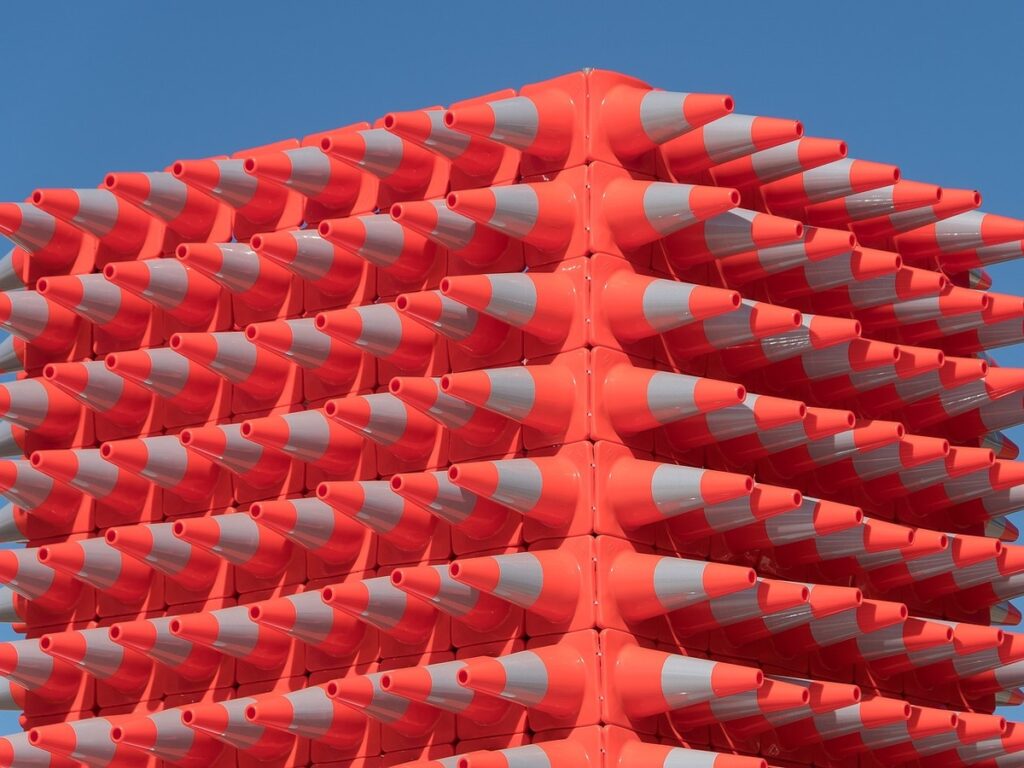
Kosteneffizienz
Leitkegel bieten eine der kostengünstigsten Lösungen zur Staubewältigung und Verbesserung des Verkehrsflusses. Im Gegensatz zu teuren Infrastrukturprojekten oder fortschrittlichen Verkehrskontrollsystemen, Verkehrsleitkegel erfordern minimale Investitionen. Sie können Leitkegel in großen Mengen zu geringen Kosten kaufen, sie für Kommunen mit knappen Budgets zugänglich zu machen. Ihre Wiederverwendbarkeit trägt zu ihrer Kosteneffizienz bei. Einmal bereitgestellt, Sie können sie wiederholt für verschiedene Verkehrsmanagementszenarien verwenden, von Baustellen bis hin zu Notstraßensperrungen. Diese Erschwinglichkeit ermöglicht es Ihnen, Engpässe und Stauprobleme zu bewältigen, ohne die finanziellen Ressourcen zu belasten.
Flexibilität und Portabilität
Leitkegel sind äußerst vielseitige Hilfsmittel zur Verkehrssteuerung. Sie können sie in einer Vielzahl von Szenarien verwenden, Von der Umleitung des Verkehrs während der Hauptverkehrszeiten bis hin zur Kennzeichnung von Gefahrenbereichen. Durch ihr leichtes Design lassen sie sich leicht transportieren und bei Bedarf neu positionieren. Diese Flexibilität stellt sicher, dass Sie sich schnell an veränderte Verkehrsbedingungen anpassen können. Zum Beispiel, Verkehrsleitkegel können Ihnen dabei helfen, während der Hauptverkehrszeiten temporäre Fahrspuren zu schaffen oder Fahrzeuge um Hindernisse herumzuleiten. Durch ihre Tragbarkeit sind sie auch ideal für Notfälle geeignet, wo ein schneller Einsatz für die Aufrechterhaltung der Sicherheit und die Optimierung des Verkehrsflusses von entscheidender Bedeutung ist.
Einfache Bereitstellung und Entfernung
Leitkegel sind für einen schnellen und effizienten Einsatz konzipiert, Dies macht sie zu einer praktischen Wahl für die vorübergehende Verkehrskontrolle. Ihre Eigenschaften sorgen dafür, dass Sie sie problemlos aufstellen und entfernen können, auch in Hochdrucksituationen. Die folgende Tabelle hebt die Hauptmerkmale hervor, die Verkehrskegel so effektiv machen:
| Besonderheit | Beschreibung |
|---|---|
| Leicht | Leicht zu transportieren für einen schnellen Einsatz. |
| Zusammenklappbare Struktur | Sorgt für eine effiziente Lagerung. |
| Hohe Sichtbarkeit | Verbessert Sicherheit und Kommunikation. |
| Spart Zeit | Ermöglicht eine schnelle Bereitstellung und Entfernung. |
| Anpassbare Designs | Ermöglicht verschiedene Kegelgrößen und -höhen. |
| Kompakte Größe | Kleiner als herkömmliche Verkehrsschilder zur einfachen Befestigung. |
| Stabilitätsmechanismus | Sorgt für Stabilität bei Wind oder Stößen. |
| Klare Nachrichten | Vermittelt wichtige Informationen schnell. |
| Vorübergehende Verwendung | Ideal für temporäre Verkehrskontrollszenarien. |
Diese Eigenschaften machen Leitkegel zu einem unverzichtbaren Hilfsmittel für das Verkehrsmanagement. Ihre zusammenklappbare Struktur und kompakte Größe ermöglichen eine einfache Lagerung und einen einfachen Transport. Hohe Sichtbarkeit sorgt dafür, dass Fahrer sie klar sehen können, auch bei schlechten Lichtverhältnissen. Ganz gleich, ob Sie den Verkehr umleiten oder einen Gefahrenbereich absperren müssen, Kegel sparen Zeit und Mühe und sorgen gleichzeitig für Sicherheit und Kontrolle.
Für die Verwendung ist nur eine minimale Schulung erforderlich
Leitkegel gehören zu den am einfachsten zu verwendenden Hilfsmitteln für das Verkehrsmanagement. Sie benötigen keine spezielle Schulung oder fortgeschrittene Fähigkeiten, um sie effektiv einzusetzen. Ihr einfaches Design und ihr intuitiver Zweck machen sie für jedermann zugänglich, vom Straßenarbeiter bis zum Notfallhelfer.
Wenn Sie Verkehrskegel verwenden, Der Prozess ist unkompliziert. Sie platzieren sie an der gewünschten Stelle, um Fahrzeuge zu leiten oder Bereiche abzusperren. Die leuchtenden Farben und reflektierenden Oberflächen sorgen dafür, dass Fahrer sie gut sehen können. Diese Sichtbarkeit verringert das Risiko von Verwirrung und trägt dazu bei, die Ordnung auf der Straße aufrechtzuerhalten. Sie können ihre Platzierung auch schnell anpassen, wenn sich die Verkehrsbedingungen ändern.
Für zusätzliche Bequemlichkeit, Verkehrsleitkegel werden oft mit klaren Anweisungen oder Richtlinien geliefert. In dieser Anleitung wird der richtige Abstand erläutert, Platzierung, und Nutzung. Zum Beispiel, Möglicherweise müssen Sie die Kegel platzieren 30 In Hochgeschwindigkeitszonen sollten die Füße auseinander stehen, in Baustellen näher beieinander. Wenn Sie diese einfachen Richtlinien befolgen, stellen Sie sicher, dass Sie Kegel effektiv und sicher verwenden.
Auch wenn Sie neu im Verkehrsmanagement sind, Sie können den Umgang mit Zapfen in wenigen Minuten erlernen. Durch ihr leichtes Design sind sie leicht zu tragen und zu positionieren. Sie können sie auch zur Lagerung oder zum Transport stapeln, was die Logistik vereinfacht. Wenn Sie Verkehrskegel kaufen müssen, Sie werden feststellen, dass es sie in verschiedenen Größen und Designs gibt, um unterschiedlichen Anforderungen gerecht zu werden.
Leitkegel ermöglichen es Ihnen, den Verkehr zu bewältigen, ohne dass umfangreiche Schulungen erforderlich sind. Ihre Benutzerfreundlichkeit stellt sicher, dass jeder zu sichereren und effizienteren Straßen beitragen kann.
Fallstudien: Leitkegel in Aktion
Einsatz von Leitkegeln durch staatliche Behörden zur Verbesserung des Verkehrsflusses
Staatliche Stellen Im ganzen Land sind Verkehrsleitkegel im Einsatz, um Staus zu bewältigen und die Verkehrssicherheit zu verbessern. Diese Behörden verwenden Verkehrskontrollkegel, um bei Notfällen oder Ereignissen mit hohem Verkehrsaufkommen vorübergehende Verkehrsmuster zu erstellen. Zum Beispiel, bei großen Sportveranstaltungen, Kegel helfen dabei, Fahrzeuge auf ausgewiesene Parkflächen umzuleiten. Dies reduziert Staus in der Nähe von Stadien und sorgt für einen reibungsloseren Verkehrsfluss.
Ein weiteres Beispiel betrifft Hurrikan-Evakuierungen. Staatliche Verkehrsämter Setzen Sie Kegel ein, um Gegenverkehrsspuren einzurichten. Diese Fahrspuren ermöglichen es Fahrzeugen, auf Autobahnen in die entgegengesetzte Richtung zu fahren, Erhöhung der Kapazität der Straße für den ausgehenden Verkehr. Diese Strategie hilft Ihnen, bei Naturkatastrophen sicher und schnell zu evakuieren.
In Bauzonen, Staatliche Behörden nutzen Leitkegel, um Fahrspuren zu sperren und Fahrzeuge über Umleitungen zu leiten. Reflektierende Zapfen verbessern die Sichtbarkeit nachts, Sicherstellen, dass Fahrer sicher navigieren können. Durch den Einsatz von Verkehrsleitkegeln, Agenturen können diese Änderungen umsetzen, ohne den Datenverkehr für längere Zeit zu unterbrechen. Ihre schnelle Bereitstellung und Entfernung machen sie zu einem unverzichtbaren Werkzeug für die effiziente Verwaltung des Datenverkehrs.
Tipp: Bei Reisen durch Gebiete, die von staatlichen Behörden verwaltet werden, Befolgen Sie stets die Hinweise durch Verkehrsleitkegel. Sie sind strategisch platziert, um Ihre Sicherheit zu gewährleisten und den Verkehrsfluss zu verbessern.
Beispiele für die Implementierung von Leitkegeln in lokalen Engpassbereichen
Kommunalverwaltungen nutzen auch Leitkegel, um Engpässe in städtischen und vorstädtischen Gebieten zu beseitigen. Zum Beispiel, Während der Hauptverkehrszeit erscheinen an stark befahrenen Kreuzungen häufig Leitkegel. Sie helfen dabei, temporäre Abbiegespuren zu schaffen, Reduzierung von Verzögerungen und Verbesserung des Fahrzeugflusses.
In Schulzonen, Verkehrsleitkegel schützen Fußgänger, indem sie Zebrastreifen markieren und Barrieren zwischen Fahrzeugen und Gehwegen schaffen. Dies gewährleistet die Sicherheit der Schüler und verringert das Unfallrisiko.
Ein weiteres Beispiel sind Gemeinschaftsveranstaltungen wie Paraden oder Festivals. Lokale Behörden nutzen Verkehrsleitkegel, um Straßen abzusperren und den Verkehr auf Ausweichrouten umzuleiten. Dies minimiert Staus in Veranstaltungsbereichen und sorgt für eine reibungslose Fortbewegung der Fahrzeuge.
Notiz: Leitkegel eignen sich nicht nur für Großprojekte. Sie können ihre Wirkung in alltäglichen Situationen sehen, von Schulabbrüchen bis hin zu Wochenendveranstaltungen.
Diese Fallstudien verdeutlichen die Vielseitigkeit von Verkehrskegeln. Ob von staatlichen Stellen oder Kommunalverwaltungen genutzt, Sie bieten praktische Lösungen zur Bewältigung von Staus und zur Verbesserung der Sicherheit.
Herausforderungen und Lösungen beim Einsatz von Leitkegeln
Möglicher Missbrauch oder falsche Platzierung
Die unsachgemäße Verwendung oder Platzierung von Leitkegeln kann den Verkehrsfluss stören und ihre Wirksamkeit beeinträchtigen. Zum Beispiel, Wenn die Verkehrsleitkegel zu nahe beieinander platziert werden, kann dies die Fahrer verwirren, während große Abstände dazu führen können, dass Fahrzeuge nicht richtig geführt werden. Auch falsch platzierte Verkehrsleitkegel können Fahrspuren unnötig blockieren, was zu zusätzlichen Staus führt. Um diese Probleme zu vermeiden, Sie sollten die etablierten Verkehrsmanagementrichtlinien befolgen. Richtiger Abstand, Typischerweise 30 Halten Sie in Bereichen mit hoher Geschwindigkeit die Füße auseinander, sorgt für klare Führung. Eine regelmäßige Überwachung der Kegelplatzierung trägt dazu bei, die Ordnung aufrechtzuerhalten und Missbrauch vorzubeugen. Durch die Schulung der Mitarbeiter in korrekten Einsatztechniken werden Fehler weiter minimiert und eine effektive Verkehrskontrolle gewährleistet.
Gewährleistung der Sichtbarkeit bei schlechten Lichtverhältnissen
Schlechte Lichtverhältnisse, wie nachts oder nebliges Wetter, kann die Sichtbarkeit von Verkehrskegeln erschweren. Dies verringert ihre Fähigkeit, Fahrzeuge zu leiten und für Sicherheit zu sorgen. Um dies anzugehen, Verkehrsleitkegel sind in leuchtenden Farben wie Orange oder Limettengrün gestaltet. Reflektierende Materialien verbessern ihre Sichtbarkeit, indem sie das Licht der Fahrzeugscheinwerfer reflektieren. Für zusätzliche Beleuchtung können Sie auch Leitkegel mit integrierten LED-Leuchten verwenden. Durch die Platzierung von Kegeln in gut beleuchteten Bereichen oder die Verwendung tragbarer Beleuchtungssysteme wird die Sicht weiter verbessert. Durch diese Maßnahmen wird sichergestellt, dass die Leitkegel weiterhin den Verkehr leiten und die Sicherheit gewährleisten, auch unter schwierigen Bedingungen.
Behebung öffentlicher Verwirrung oder Nichteinhaltung
Manchmal kann es passieren, dass Autofahrer den Zweck von Verkehrsleitkegeln ignorieren oder missverstehen, was zur Nichteinhaltung führt. Dies kann den Verkehrsfluss stören und die Sicherheit gefährden. Eine klare Beschilderung neben den Leitkegeln hilft dabei, den Fahrern ihren Zweck zu verdeutlichen. Zum Beispiel, Schilder, die auf Fahrbahnsperrungen oder Umleitungen hinweisen, verringern die Verwirrung. Durch öffentliche Sensibilisierungskampagnen können Autofahrer darüber aufgeklärt werden, wie wichtig es ist, Verkehrskontrollmaßnahmen zu befolgen. Sie können auch Durchsetzungsstrategien verwenden, wie zum Beispiel den Einsatz von Verkehrspolizisten, um die Einhaltung sicherzustellen. Diese Schritte tragen dazu bei, die Ordnung aufrechtzuerhalten und die Wirksamkeit von Verkehrsmanagementlösungen zu verbessern.
Wartung und Austausch beschädigter Kegel
Die ordnungsgemäße Wartung von Verkehrskegeln gewährleistet ihre Wirksamkeit und verlängert ihre Lebensdauer. Sie sollten die Kegel regelmäßig auf Anzeichen von Abnutzung prüfen. Suchen Sie nach Rissen, Fading, oder Beschädigung des reflektierenden Materials. Diese Probleme können die Sicht beeinträchtigen und die Sicherheit gefährden. Wenn Sie einen erheblichen Schaden bemerken, Tauschen Sie die Leitkegel sofort aus, um eine zuverlässige Verkehrskontrolle aufrechtzuerhalten.
Das Reinigen der Kegel ist ein weiterer wesentlicher Schritt. Verwenden Sie milde Seife und Wasser, um Schmutz und Dreck zu entfernen. Dadurch bleiben die Zapfen gut sichtbar, insbesondere bei schlechten Lichtverhältnissen. Vermeiden Sie die Verwendung scharfer Chemikalien, da sie das Material mit der Zeit zersetzen können. Nach dem Reinigen, Lagern Sie die Zapfen aufrecht an einem trockenen Ort. Dies verhindert ein Verziehen und stellt sicher, dass sie für den zukünftigen Gebrauch in gutem Zustand bleiben.
Auch extreme Witterungseinflüsse können die Haltbarkeit von Verkehrskegeln beeinträchtigen. Längere Sonneneinstrahlung kann zum Ausbleichen führen, während extreme Temperaturen das Material schwächen können. Um diese Probleme zu vermeiden, Bewahren Sie Zapfen nach Möglichkeit vor direkter Sonneneinstrahlung und rauen Umgebungsbedingungen geschützt auf. Die richtige Lagerung bewahrt nicht nur ihr Aussehen, sondern steigert auch ihre Leistung auf der Straße.
Wenn die Kegel einen erheblichen Verschleiß aufweisen, Erwägen Sie ein Upgrade auf neuere Modelle. Moderne Leitkegel verfügen häufig über erweiterte Funktionen, wie verbesserte reflektierende Materialien oder integrierte LED-Leuchten. Diese Upgrades können die Sichtbarkeit verbessern und sich an veränderte Verkehrsmanagementanforderungen anpassen. Durch den Austausch veralteter Kegel, Sie stellen sicher, dass Ihre Verkehrskontrollmaßnahmen effektiv und aktuell bleiben.
Tipp: Regelmäßige Wartung und rechtzeitiger Austausch der Leitkegel sparen Ihnen auf lange Sicht Geld. Gut gepflegte Kegel halten länger und bieten eine konstante Leistung, Reduzierung der Notwendigkeit häufiger Austausche.
Indem Sie diese Praktiken befolgen, Sie können den Nutzen Ihrer Leitkegel maximieren und für Sicherheit sorgen, effizientes Verkehrsmanagement.
Zukünftige Überlegungen zum Verkehrsmanagement
Integration von Leitkegeln mit intelligenten Technologien
Intelligente Technologien verändern das Verkehrsmanagement, und Verkehrskegel sind keine Ausnahme. Durch die Integration von Kegeln mit erweiterten Funktionen, Sie können ihre Funktionalität verbessern und die Verkehrssicherheit verbessern.
- IoT-fähige Kegel überwachen Straßenbedingungen und Verkehrsmuster. Sie teilen Echtzeitdaten mit Verkehrsmanagementsystemen, hilft Ihnen, schnell fundierte Entscheidungen zu treffen.
- Solarbetriebene Kegel reduzieren die Abhängigkeit von herkömmlicher Elektrizität. Diese Eigenschaft macht sie energieeffizient und umweltfreundlich.
- Eingebaute Sensoren erkennen Veränderungen im Straßenzustand. Diese Sensoren bieten Echtzeitwarnungen über Gefahren, Gewährleistung, dass die Fahrer informiert und sicher bleiben.
- Intelligente Gummikegel sind mit Sensoren ausgestattet, die Licht erkennen, Wetter, und Fahrzeugpräsenz. Dadurch können Sie Verkehrskontrollmaßnahmen entsprechend den aktuellen Bedingungen anpassen.
- Drahtlose Kommunikationsfunktionen ermöglichen es Kegeln, Daten an Verkehrssysteme zu übertragen. Dadurch wird sichergestellt, dass Sie Echtzeit-Updates für ein besseres Verkehrsflussmanagement erhalten.
- Solarbetriebene LED-Leuchten verbessern die Sicht und minimieren gleichzeitig die Umweltbelastung. Sie reduzieren auch die Wartungskosten, was sie zu einer kostengünstigen Lösung macht.
Tipp: Der Einsatz intelligenter Leitkegel kann Ihnen dabei helfen, ein reaktionsfähigeres und effizienteres Verkehrsmanagementsystem zu schaffen. Ihre Fähigkeit, sich an veränderte Bedingungen anzupassen, sorgt für sicherere Straßen für alle.
Langfristige Vorteile von Leitkegeln für nachhaltige Verkehrslösungen
Leitkegel bieten langfristig erhebliche Vorteile für ein nachhaltiges Verkehrsmanagement. Ihre Haltbarkeit stellt sicher, dass sie rauem Wetter und Stößen standhalten, Reduzierung der Notwendigkeit häufiger Austausche. Diese Langlebigkeit unterstützt eine Kreislaufwirtschaft, indem Abfall minimiert und Ressourcen geschont werden.
Viele Gummikegel werden aus recycelten Materialien hergestellt. Durch die Verwendung dieser Zapfen, Sie tragen zur Abfallreduzierung und Energieeinsparung bei. Ihre Flexibilität erhöht die Sicherheit, indem sie sich beim Aufprall verbiegt, Verringerung des Risikos von Fahrzeugschäden und Verletzungen. Zusätzlich, Ihr modularer Aufbau ermöglicht es Ihnen, einzelne Teile auszutauschen, anstatt den gesamten Kegel wegzuwerfen. Dies verlängert ihre Lebensdauer und verringert die Umweltbelastung.
Notiz: Die Wahl langlebiger und umweltfreundlicher Leitkegel spart nicht nur Geld, sondern unterstützt auch die Nachhaltigkeit. Ihre langfristige Nutzung trägt dazu bei, sicherere und umweltfreundlichere Straßen für zukünftige Generationen zu schaffen.
Leitkegel bieten Ihnen eine einfache, aber leistungsstarke Lösung zur Bewältigung von Verkehrsengpässen. Aufgrund ihrer Erschwinglichkeit und Benutzerfreundlichkeit sind sie ein unverzichtbares Instrument zur Verbesserung der Verkehrssicherheit und zur Reduzierung von Staus. Sie können sie schnell einsetzen, um unmittelbare Verkehrsherausforderungen zu bewältigen, oder sie als Teil langfristiger Strategien nutzen.
Tipp: Beginnen Sie noch heute damit, Leitkegel in Ihre Verkehrsmanagementpläne zu integrieren. Ihre Vielseitigkeit stellt sicher, dass sie sich an verschiedene Szenarien anpassen, von Bauzonen bis hin zu Notsituationen.
Ermutigen Sie Ihre Kommunen vor Ort und Verkehrsplaner, diese kostengünstigen Tools zu nutzen. Auf diese Weise, Sie tragen zu sicherer bei, Effizientere Straßen für alle.
